The word « glitch » first appeared in spaceship programmes in the USA in 1962. A computer glitch is the failure of a system, usually containing a computing device, to complete its functions or to perform them properly. The word spread to electronic music in the 1990’s. Glitch goes with the notions of bug, repetiton , linearity or fragmentation to quote Iman Morandi’s « Aestehetics of glitch », 2004.
Made purposedly or not by the artist, beauty comes accidentally, from a bug. The art of glitch stems from manipulation of the medium, programming experiment, playing with graphic cards… experimenting with all the « back-stage » setting of a fixed or moving image just to see what happens, exactly as Nam June Paik did with video art and the cathode ray-tube.
Gamerz 09 – Isabelle Arvers par Festival-GAMERZ
Beauty might come also from the multiplication, leverage or double-exposure of shapes.When hyper-realism ends in unreal representation of a non-perfect reality, Glitch brings about poetry : it brings analogue to the digital, like a speck of dust into the perfect coded reality.
Bugs, accidents, mistakes and glitches are full part of the video games world. Repetition and mistakes are part of learning. No one can learn how to play without making mistakes, and repeting over and over again the same scene. Frustration leads to pleasure.Bug and Glitch hint at the very link between the player and the video game. Try out what was not expected by the game developer, play with the original function of the object and explore the limits of the game and its potential.
Glitch then embodies our passing through the looking glass to see what’s hidden behind in the cracks.To quote Deleuze and Gattari’s theory of the “rhizome” and “rhizomatic” it allows for multiple, non-hierarchical entry and exit points in data representation and interpretation. Glitch makes visible what was primarily invisible : digital code, random access memory, the whole production process of an art work and all that may happen during the process of image transmission and transfer from one format to another. Machiniglitch is an ode to the Glitch Aesthetics!
Here are the pictures of the exhibition during the last Gamerz Festival:
1. Jupiter and Beyond the Blocks, 2013 Félicien Goguey & Benjamin Bartholet, France
Settling near Jupiter, Dave Bowman leaves Discovery One. He watches this huge black monolith put into orbit around the gaseous giant and goes on board a strange coloured psychedlic high-speed…. cubic trip. Just Like the monolith, with no curves at all, Jupiter and Beyond the Blocks is a machinima remake of the famous scene from 2001 A Space Odissey, realized thanks to Minecraft.
2. Machinhuma, 2013 Edouard Taufenbach France
Machinhuma is inspired by Stefan Zweig’s Chessgame. It is a free and multidimensional interpretation of M. B character’s lonely wandering. The setting is minimal : an infinite chessboard in which Edouard Taufenbach blurs all our spatial and temporal bearings thanks to editing and graphic digressions, thus testifying of the artist’s research about the trace in movie image.
3. Bitsplit, 2012 Florian Dieude France
A video by Florian Dieude. made out of Fall Out 3 tables superposition, with gun duels, display bugs and background of 8bit music.
4. Metropolis, 2009-2011 Chris Howlett Australie
“Metropolis I, II & III” uses the game SimCity Societies to construct three imaginary and psychological zones in order to create a meditative space for reflection, seduction and poetic, apocalyptic reverie. Abstraction, repetition, the grid, and architecture all play their part throughout the world in “real” cities town planning strategies in order to produce territory and the modern civilization. The recent Chilean and Haitian earthquake, South-Pacific islands devastated by tsunamis, apocalyptic meteorites and the dire predictions associated with climate change, overshadow the construction of these three different, yet strangely familiar virtual sites that all strive to undermine both the logic of the game and our own safe, hygienically controlled lifestyles. In “Metropolis I, II & III”, dystopian, authoritarian and sublime, gated estates merge and dissolve into one another conjuring up disturbing comparisons between our real, lived experience and our day-to-day mediated trauma, represented elsewhere in our fantasies or across the electric spectacle of the global, media screen.
5. Prepare to Qualify, 2008 Clint Enns Canada
Prepare to Qualify is short video made on a circuit-bent Atari using Namco’s classic 1982 video game Pole Position as source material. For those unfamiliar, circuit-bending is the creative re-wiring (and short-circuiting) of low voltage electronic devices such as children’s toys and small digital synthesizers. Circuit bending is often used by artists to create new musical instruments and/or to generate new images and sounds.
The idea for the piece began with the question “Does breaking video game systems and playing with lo-fi electronics at the age of 28 really constitute art making?” In the video itself, a voice demands that a pixelated car “PREPARE TO QUALIFY”. As the light turns green, the car remains frozen in an ever changing sea of graphical hardware errors.
6. Glitch Kungfu, 2007 Entter et Goto80 Spain & Sweden
http://blip.tv/44422435/glitch-kung-349019
Glitch Kunfu is part of the project 44422435. It is a C64 performance made on the 20th of July 2007 and recorded on VHS. The session took 3 hours but is condensed into a few minutes. With the ‘Retro Replay’ cartridge for C64 we gain full access to the RAM of the C64 to manipulate graphics and functionality. The blue screen that appears at some points is the interface of the cartridge and the lists of letters and numbers is the data in the RAM. All manipulation was made by putting random symbols into the memory or by altering the screen graphically with PETSCII.
7. Borders: boulders at la rotonda, 2010 Mary Flanagan USA
Part of the [borders] series documenting walks of famous places in virtual worlds
This video is an excerpt from my walk around Villa Almerico-Capra, also known as ‘La Rotonda’, a 16th century manor house and grounds in Vicenza, Italy.
[borders] uses online shared virtual places as settings for walks that examine virtual property ‘ownership’ and the construction of historical truth in 3D virtual worlds. In the project, I visit virtual recreations of heritage sites and walk their borderlands. In the course of these explorations, I have captured the unexpected glitches and disruptions in an otherwise seamless environment through video recording. This project has a historical underpinning: According to the 19th Century French writer Baudelaire, the flâneur is a figure who moves through the labyrinthine streets and hidden spaces of the city. The flâneur discovers both low culture, the underworld, and the high culture, fashionable world, but remains somehow disassociated. Wordsworth took to pastoral scenes in his commitment to drifting in space, using the walk as a research method. In the US, the same idea was sustained in Thoreau’s insistence to stroll without a specific goal in order to encounter the spiritual possibilities inherent in a landscape.
8. The Fall Girl, 2012 Georgie Roxby Smith Australia
Placed as prop, non player, damsel in distress or sub-hero, the gaming female character is rarely a ‘player’ of any importance. Where female character heroes are in place, they are often overtly sexualized, such as the hyper real soft pornography of Lara Croft’s female form. The male gaze manifests itself bi-fold in an immersive environment populated by young men invested in hours of play and character’s own digital peers.The Fall Girl is a recreated death glitch which occurred whilst playing Skyrim. This death loop magnifies and distorts the violence against the female body and, in its relentlessness, begins to blur between the lines between intention – suicide, murder, accident or perpetual punishment. By removing the game play in between scenes, which when isolated are disturbing in their sharp focus, the viewer becomes critically aware of the hyper- representation of the character and the violence enacted against her. The protagonist is eternally and perpetually punished in an inescapable digital loop.
9. 8000 persons, 2013 Knut LSG Hybinette USA
http://knuthybinette.com/
What Happens when 8000 people runs towrds you. It is common feeling when done watchingg this animation: nothing. Knut’s projects explore the ideas of failed Utopias, the violence that we as humans too eagerly too embrace.
10 – Dust 2 Dust, 2013 Kent Sheely USA
Two teams of weapons battle for control of a small Middle Eastern town in Counter-Strike: Source.
In a modified version of a popular online wargame, two opposing teams of self-actuating firearms struggle for dominion over a dusty town somewhere in the Middle East.
The media presents war in simplistic terms: soldiers on either side of a conflict are either exalted as heroes or vilified as “the enemy.” Video games echo these harsh divisions
in the way they differentiate between teams, allowing players to make split-second decisions about who they should be shooting.
When the uniforms and identifying features of combatants are stripped away, however, lines of division disappear, and determining the alignment of each combatant becomes impossible; the soldiers are reduced to weapons, wielded against one another.
11. Memory of a broken dimension, 2013 Datatragedy Japan
The emulator of an obscure computer system propagates across the internet, a signal is established…
This is a very cool experimental exploration game by XRA (Data Tragedy). After navigating your way through a DOS prompt, you are thrown inside of the computer terminal and are forced to navigate your way through the glitchy, grey world and solve the puzzles to escape.
12. 30 seconds or more 01 – Beyond the magic mushrooms, 2013 Victor Morales Venezuela
This is the first of a series of animations i am doing in February 2013. I will make everyday a 30 seconds or more animation using the Cryengine. “Mushrooms” is basically a sound reactive animation where only the camera’s position and FOV are affected by the lowest frequencies of the audio. This is rendered in Real Time and it was possible thanks to hendrikp OSC plugin to drive the sound data into the engine. The awesome sound is by Pal Asle Pettersen.
13. Knightshift, 2009 Anita Fontaine UK
https://vimeo.com/4713702
Knightshift references themes of high romance and chivalry found in old and new media such as medieval fairytales and videogames. In medieval romances the image of the heroic knight, with his super-human abilities on a quest to slay monsters and dragons was almost real, and reinforced by the jousting spectacle. In One bad night the artist makes use of videogame imagery and animated gifs to build a modern jousting spectacle. The knight is shown galloping on his pixelated steed towards the dragon, the opponent, or the dame, attempting to establish a more utopian world.
14 – Remember when we walked to the edge of the world, 2013 Jon Cates USA
“Remember when we walked to the edge of the world, a precipice amidst the Noise of Oceans, Tempests and Animals: hoping to obtain a. view of the mountains? To our great delight, the clouds lowered and revealed the know clipping jagged tops of the ranges torn jagged shearings, unerased and not redrawn. Flat surfaces untextured and cell shaded beneath the skies. All lay sharply coded and clear before us, standing out above the world, just off the map. We saw undefining plateau stretching for hours away, vectoring our views.”
15 – Formation VI, 2012 Baden Pailthorp Australia
This video work is set within the US military’s simulated version of Afghanistan. Rather than using this training software to simulate violence or military encounter, instead Pailthorpe gives a group of miniature US soldiers and Taliban fighters the simplest of orders: run. Through this minor gesture of resistance, a striking aesthetic of repetition from the simulator’s own code is revealed. Unable to recognise each other thanks to a hacked setting, the multiple of each enemy body creates a kind of corporeal sculpture. As is prevalent in military vocabulary, reference to the collective body (such as the Marine Corps) connotes the machine-like structure and strength that follows a military formation of disciplined bodies. Perhaps the most universal and often political of human actions, running is used by Pailthorpe as a device to uncover pockets of resistance from within even the most closed, controlled and constructed environments: military simulations.

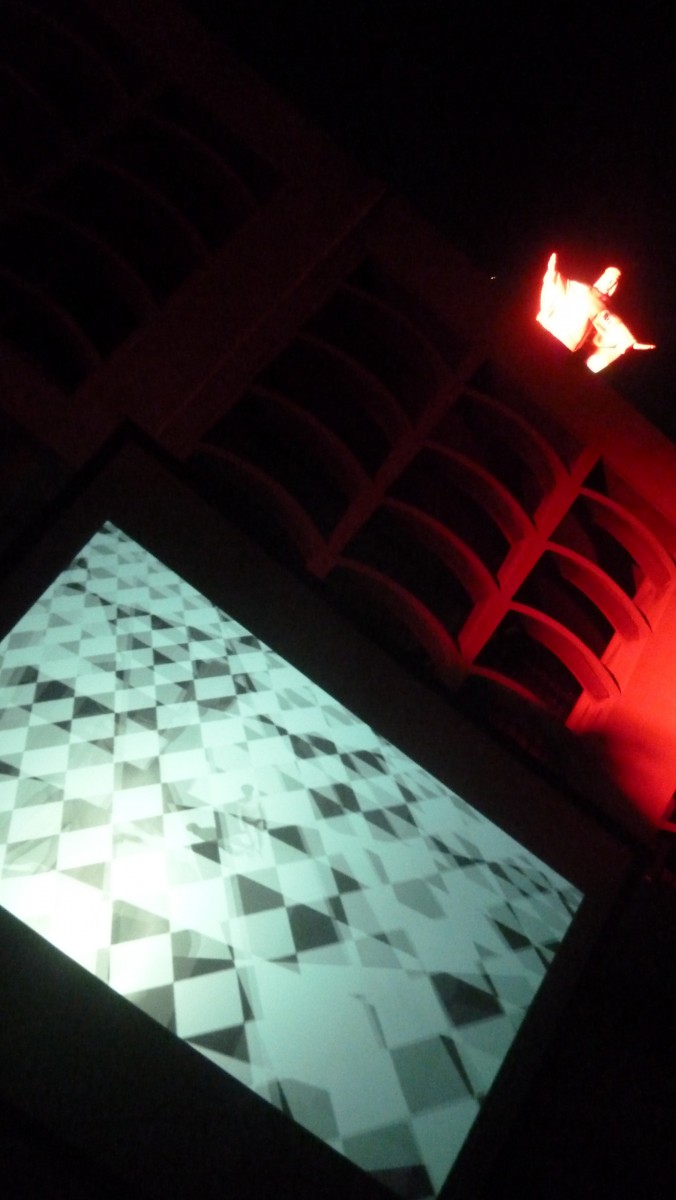
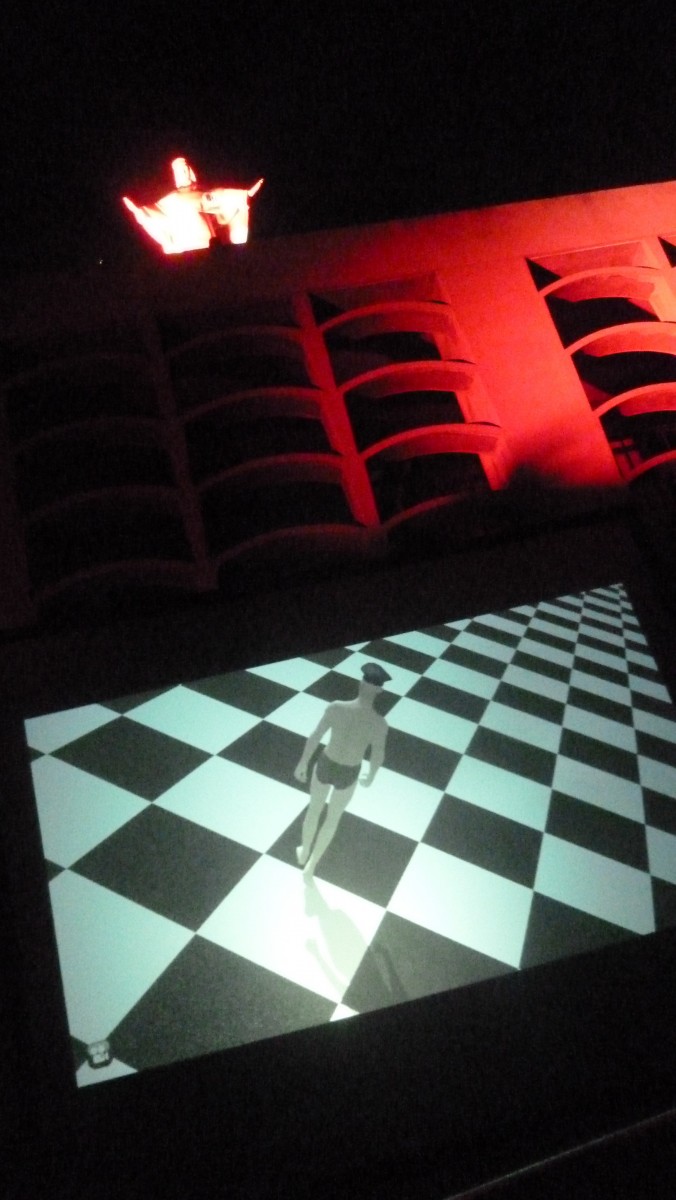
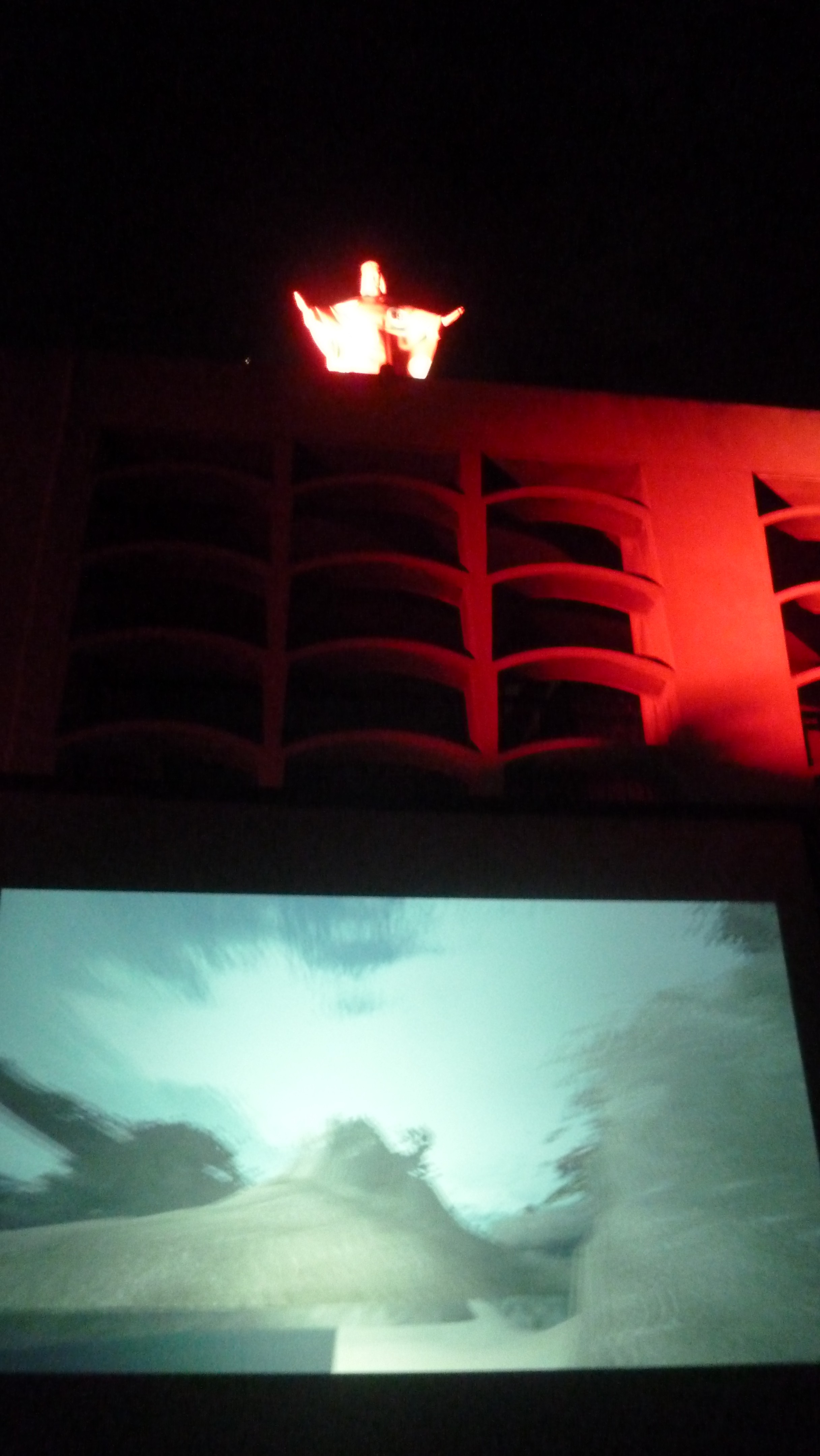
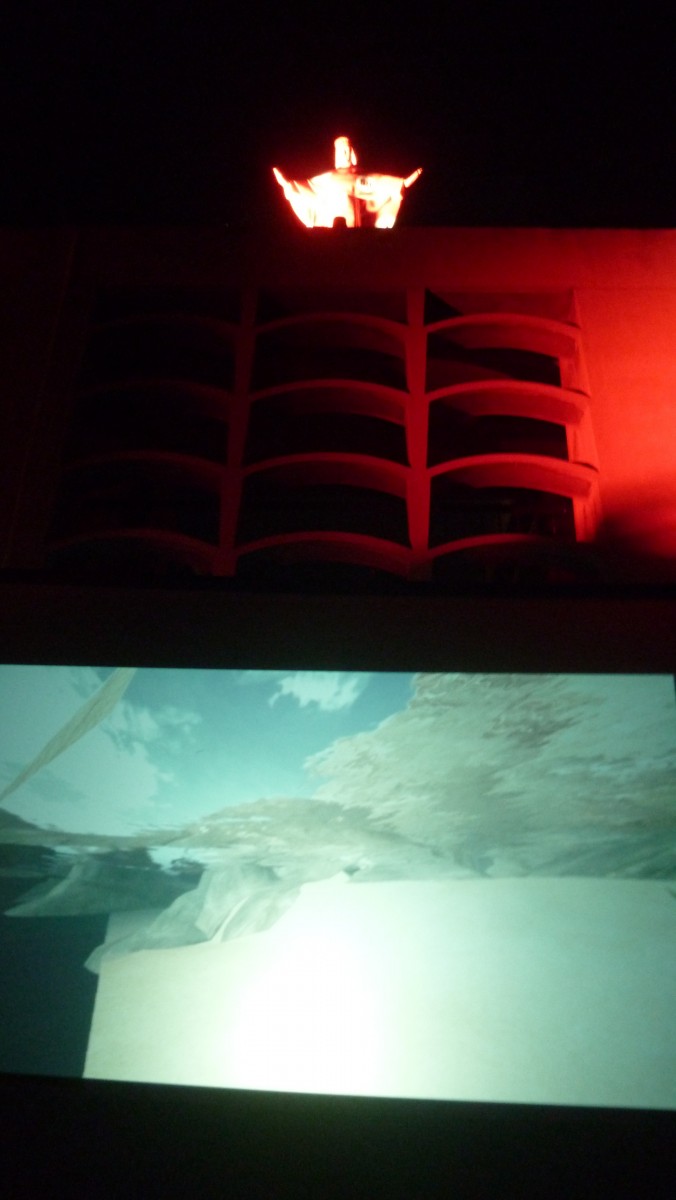
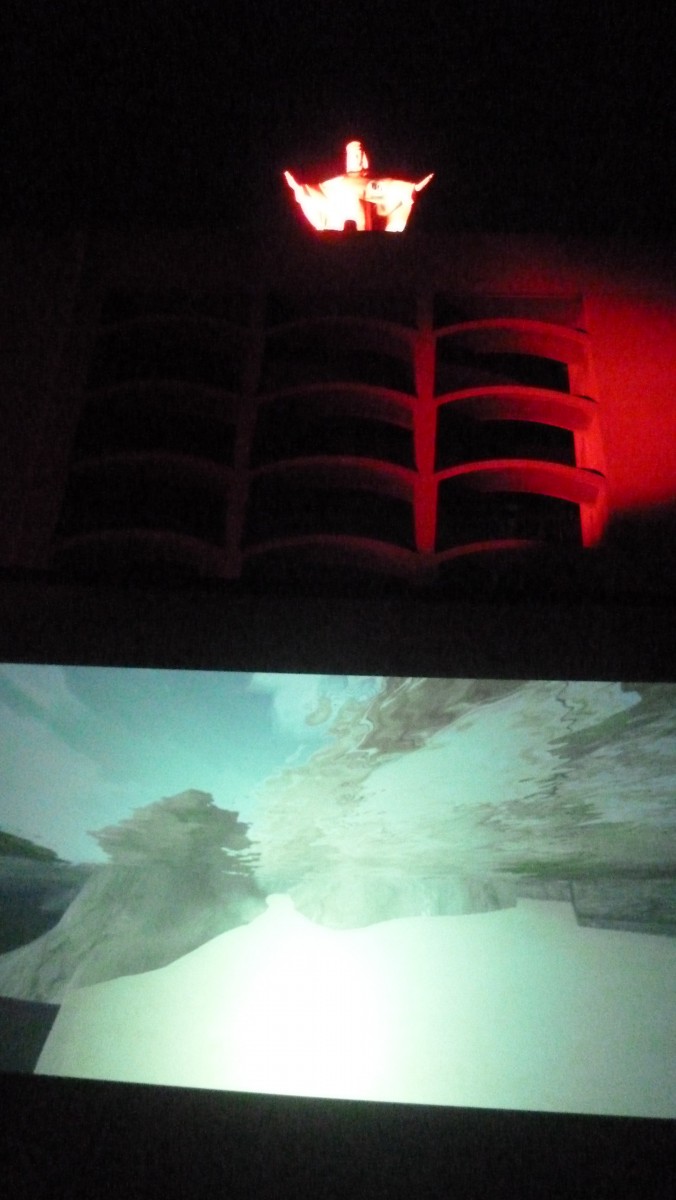
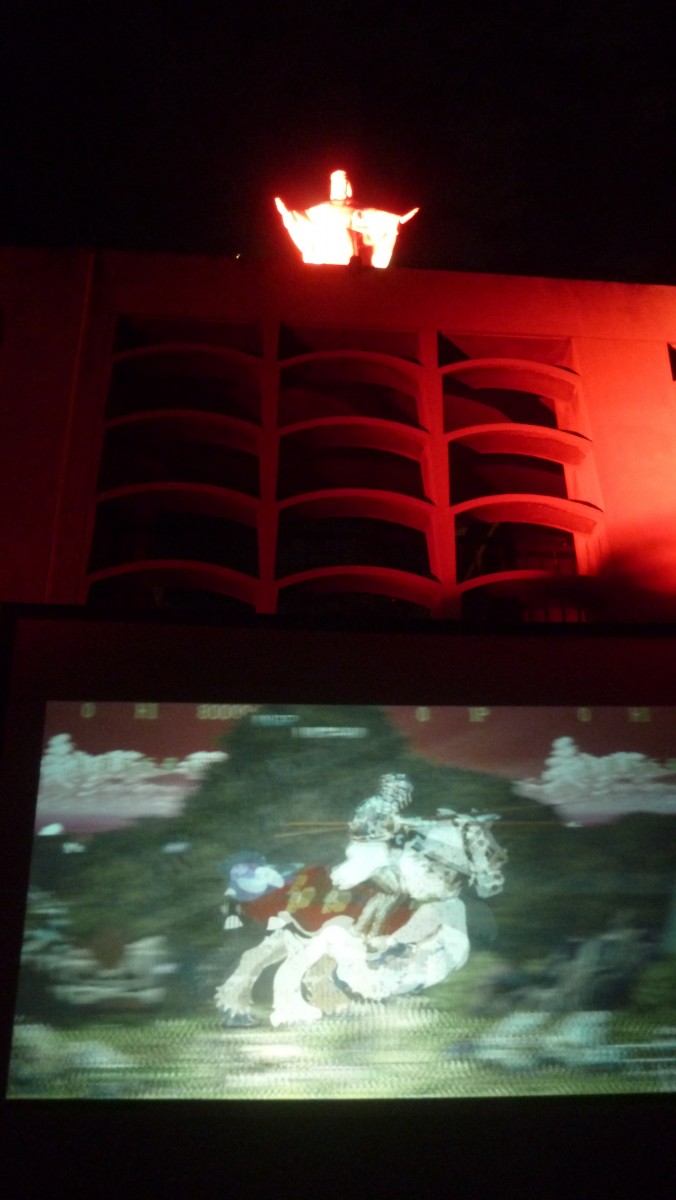
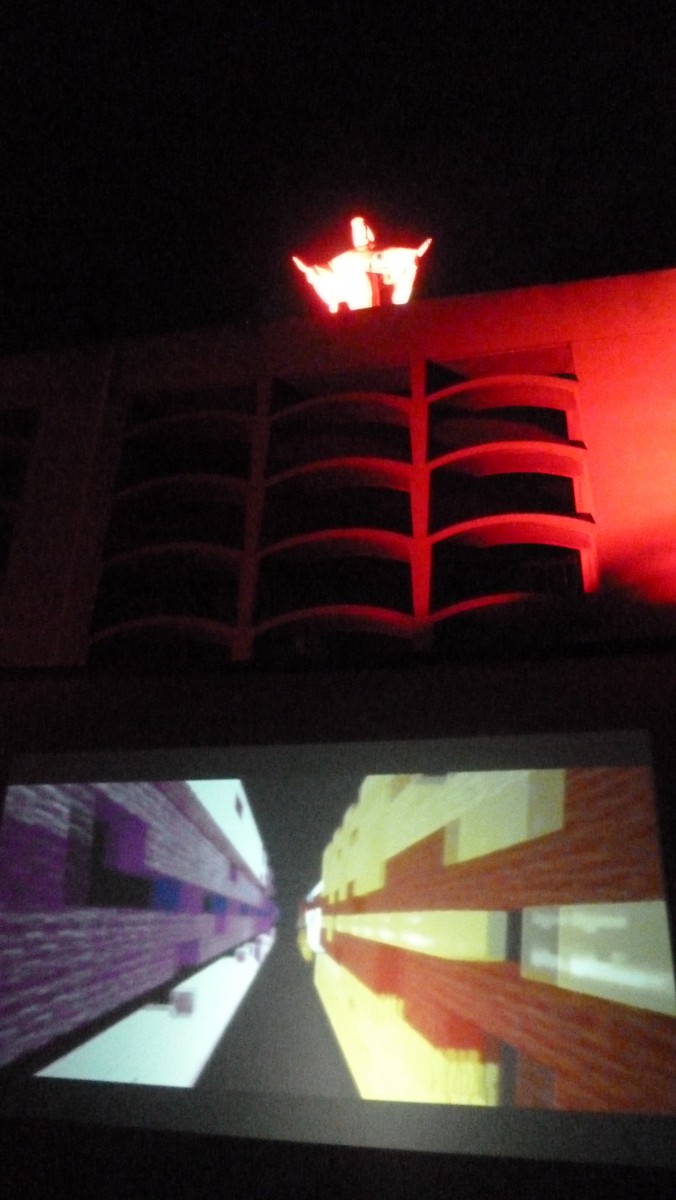
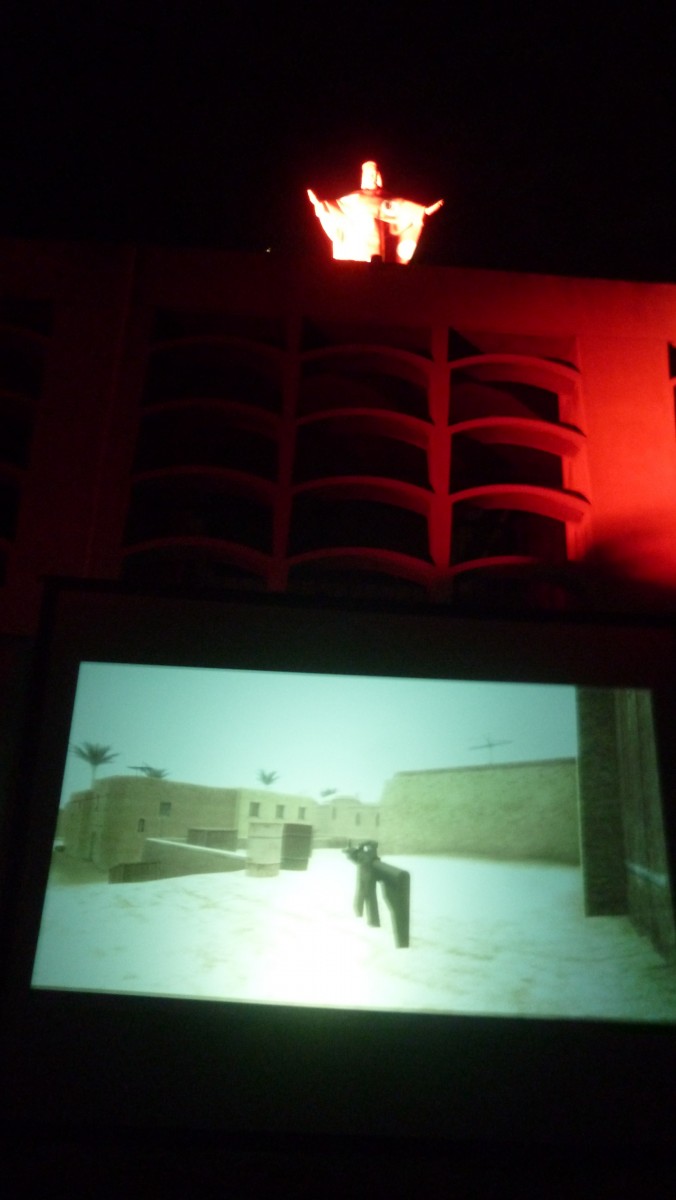
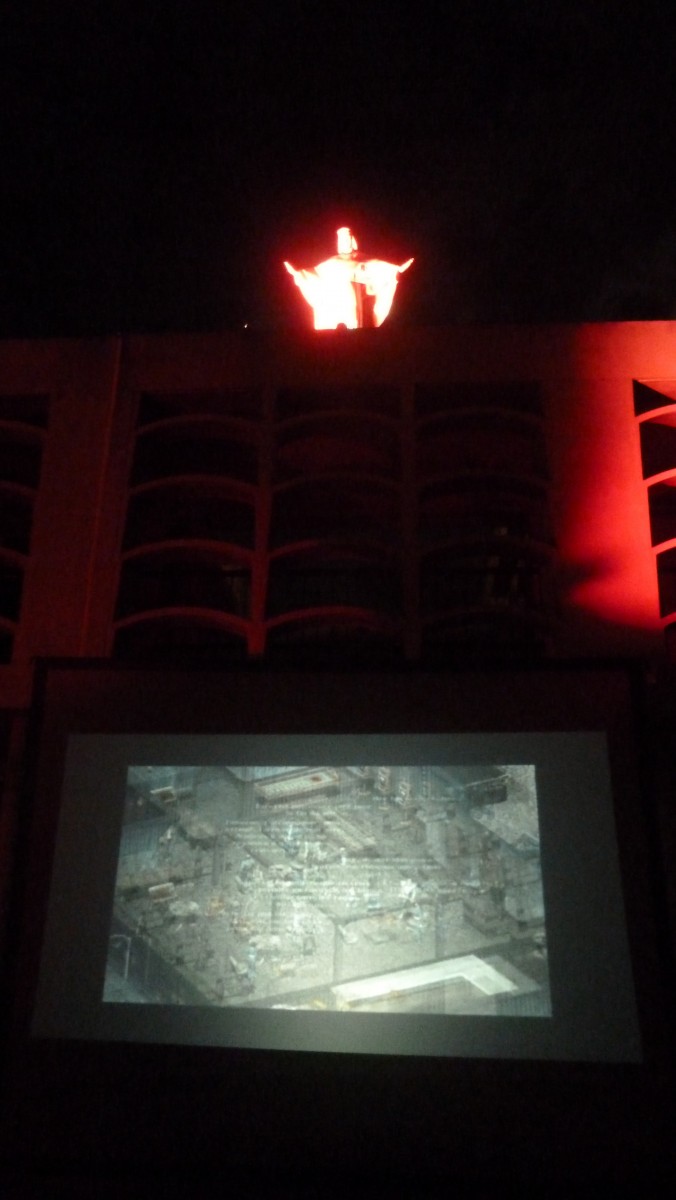
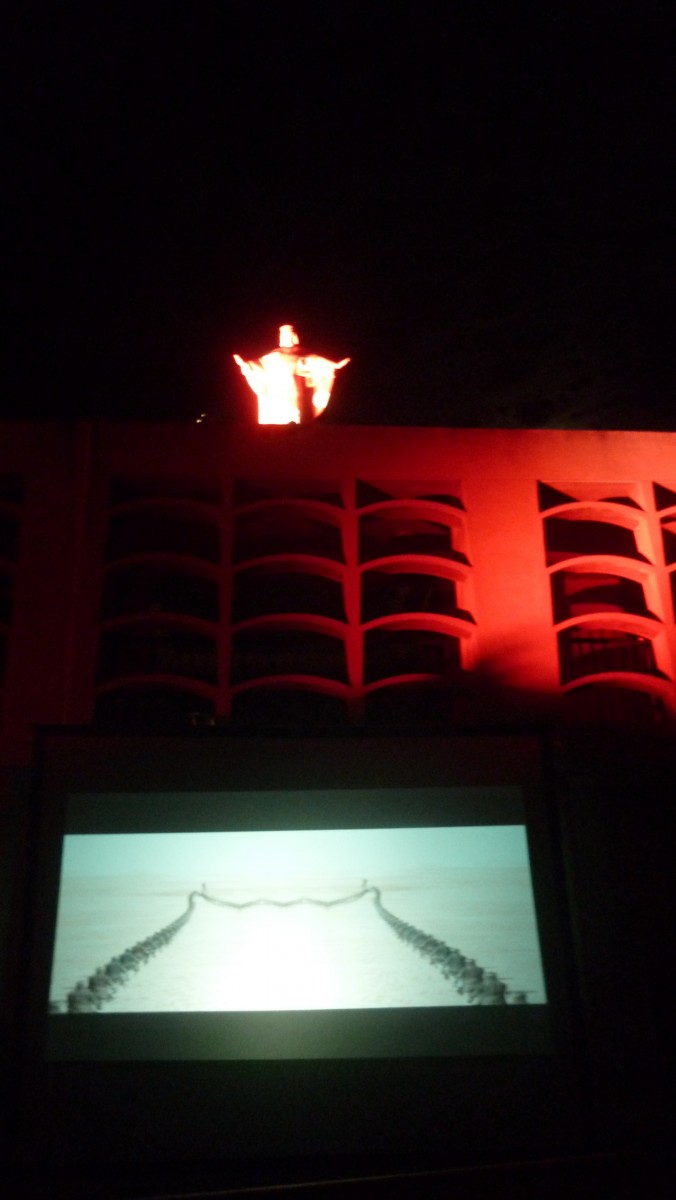
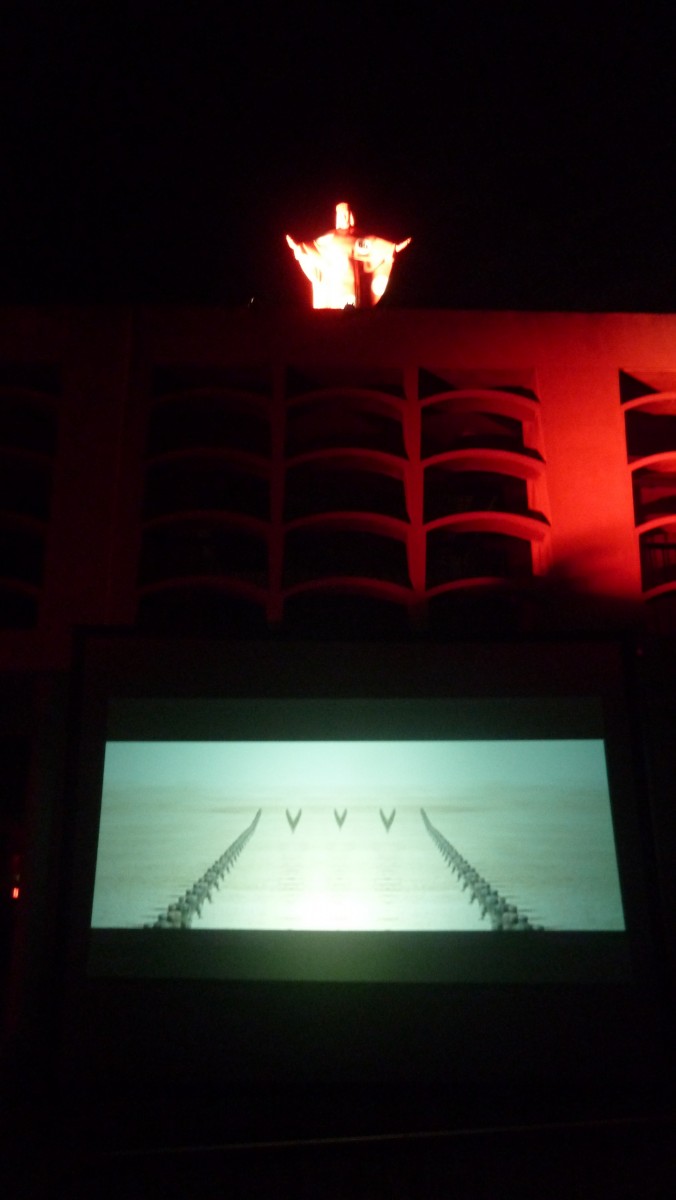
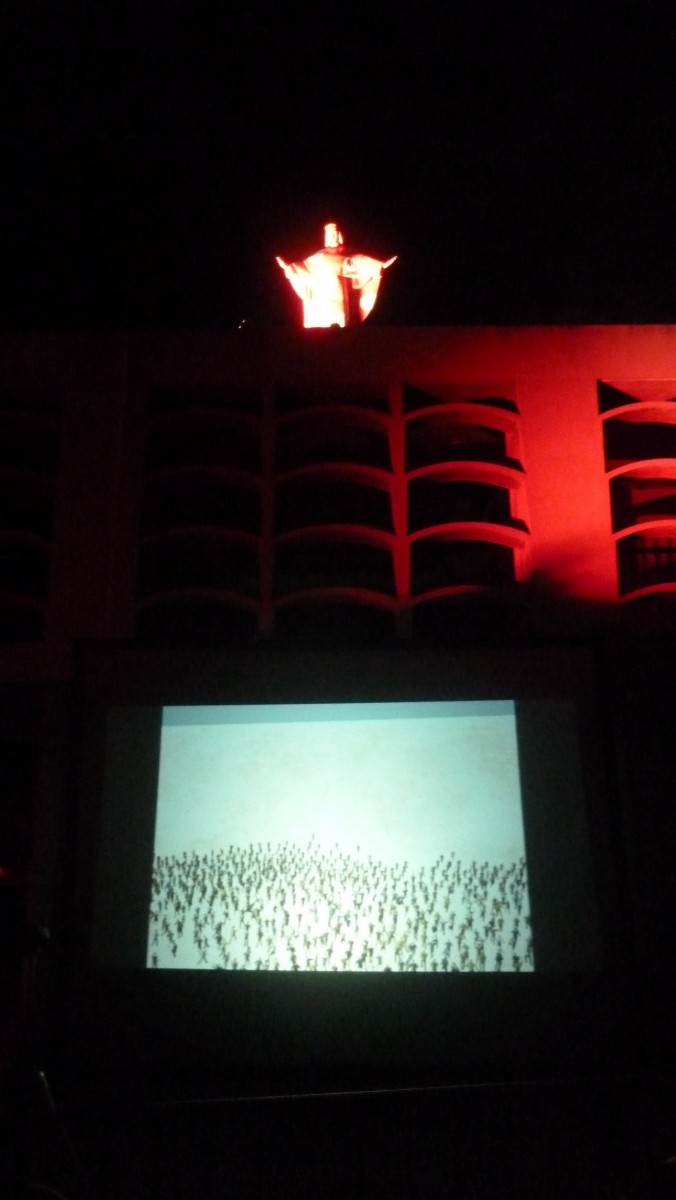
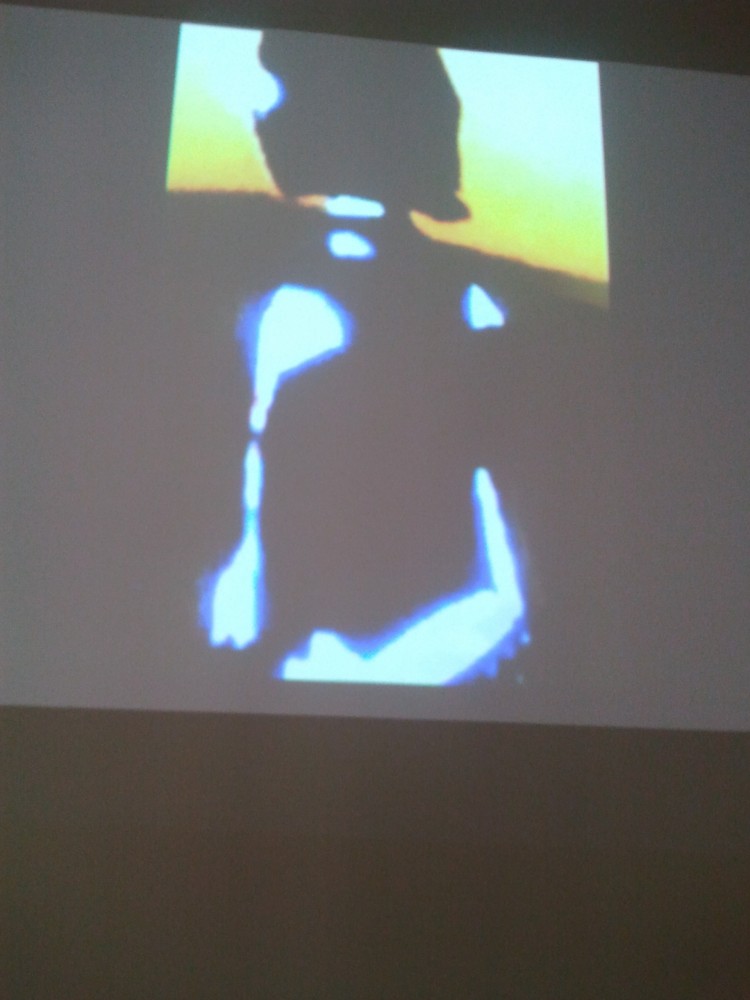
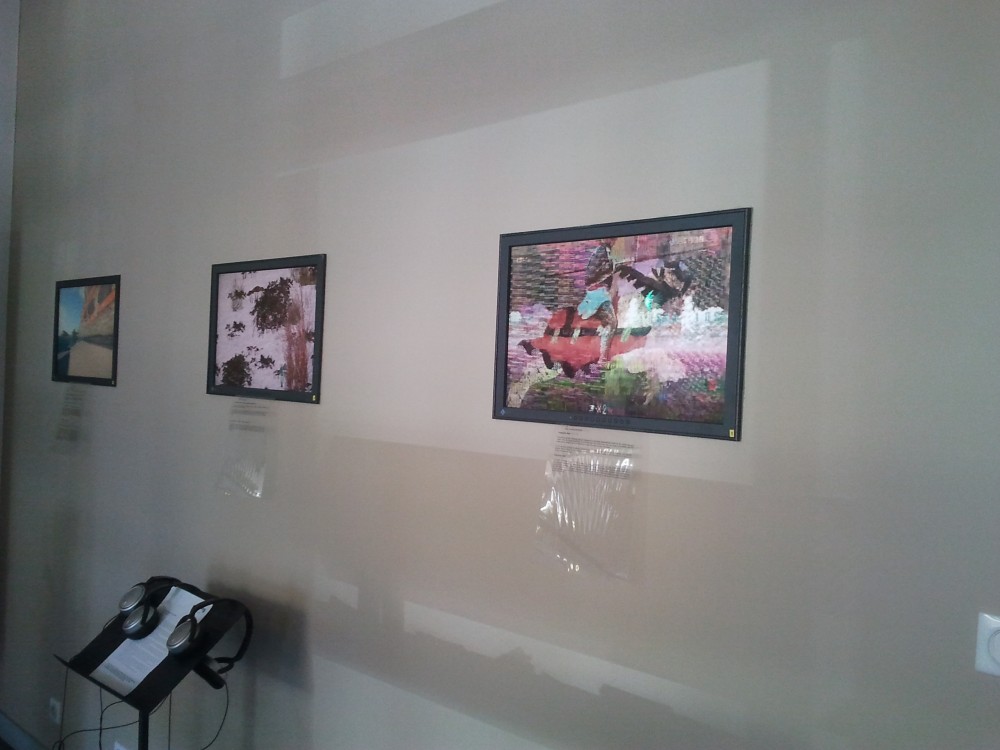
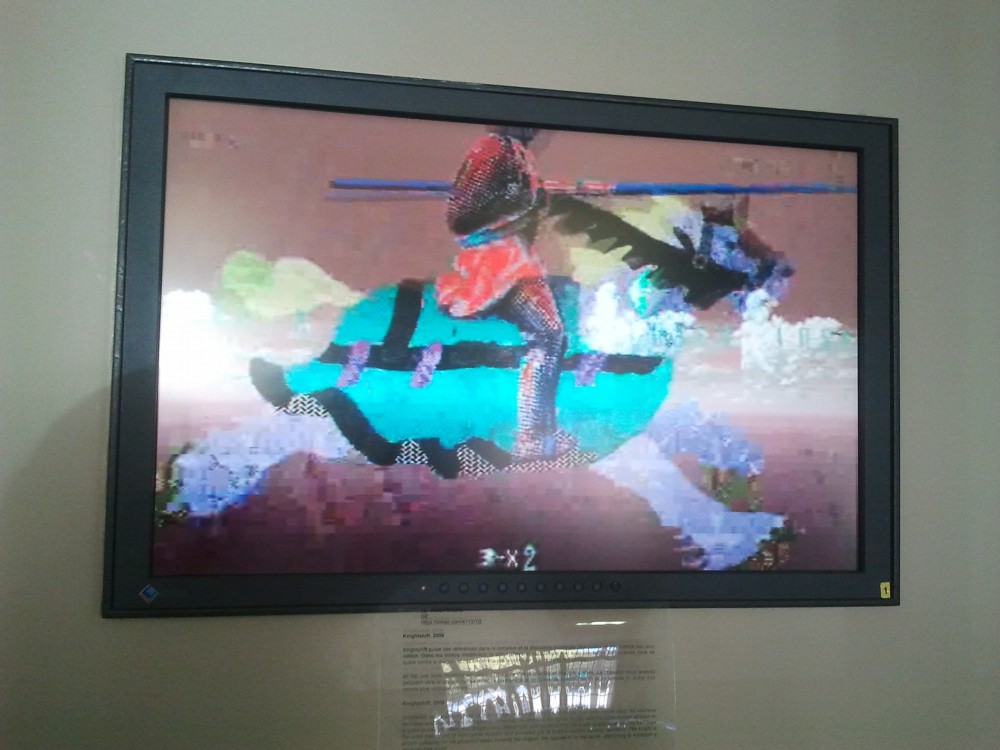
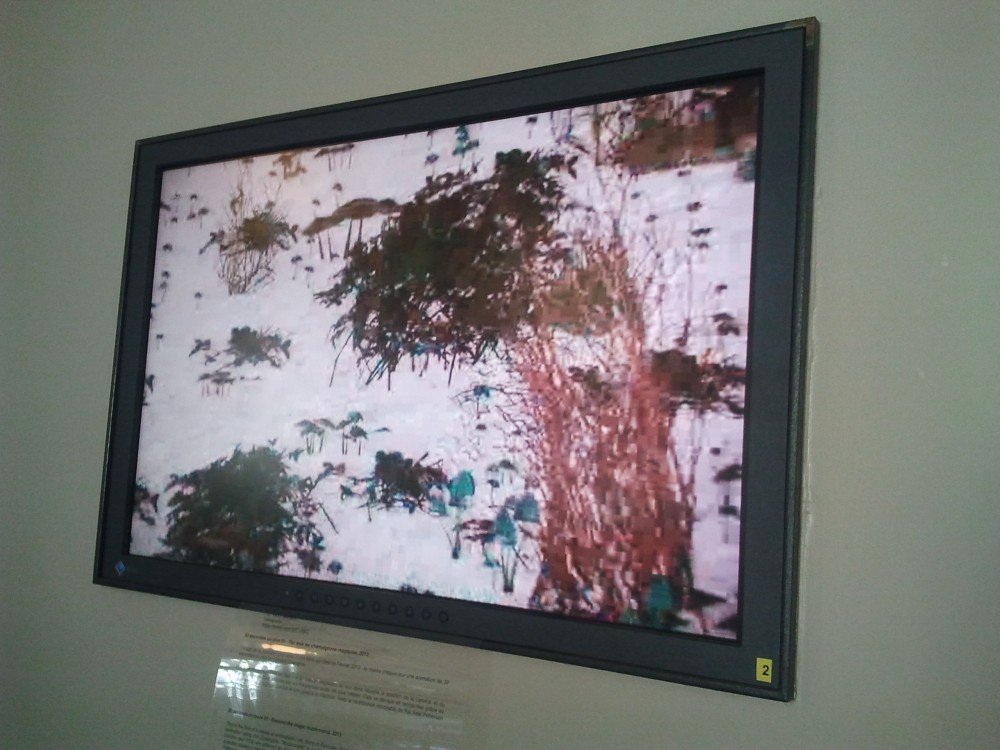
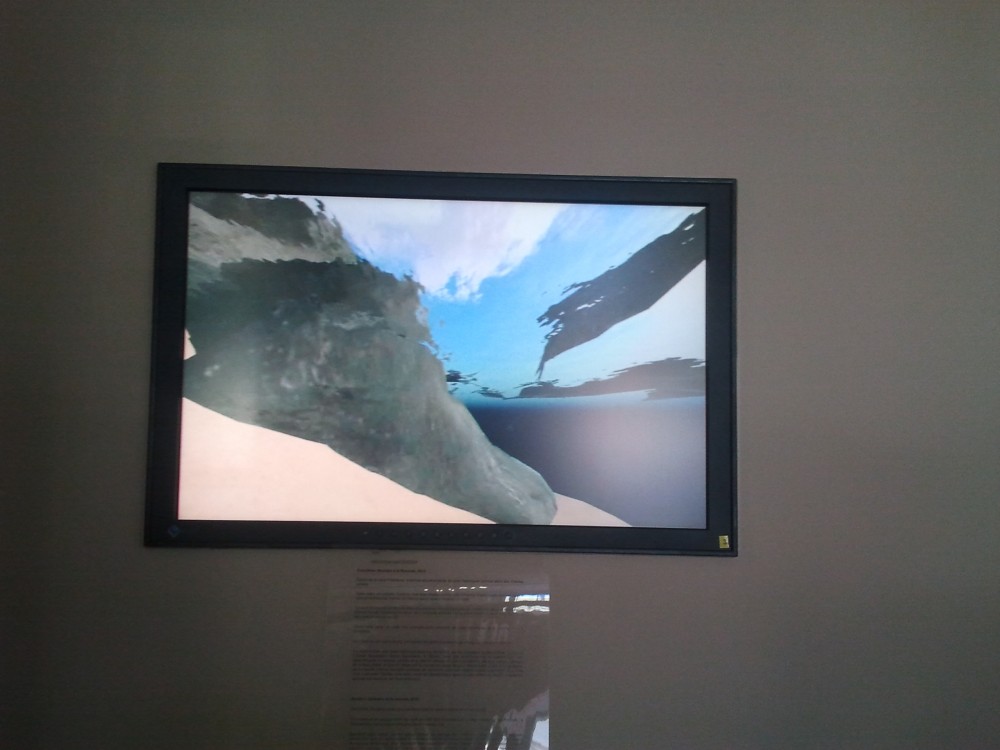
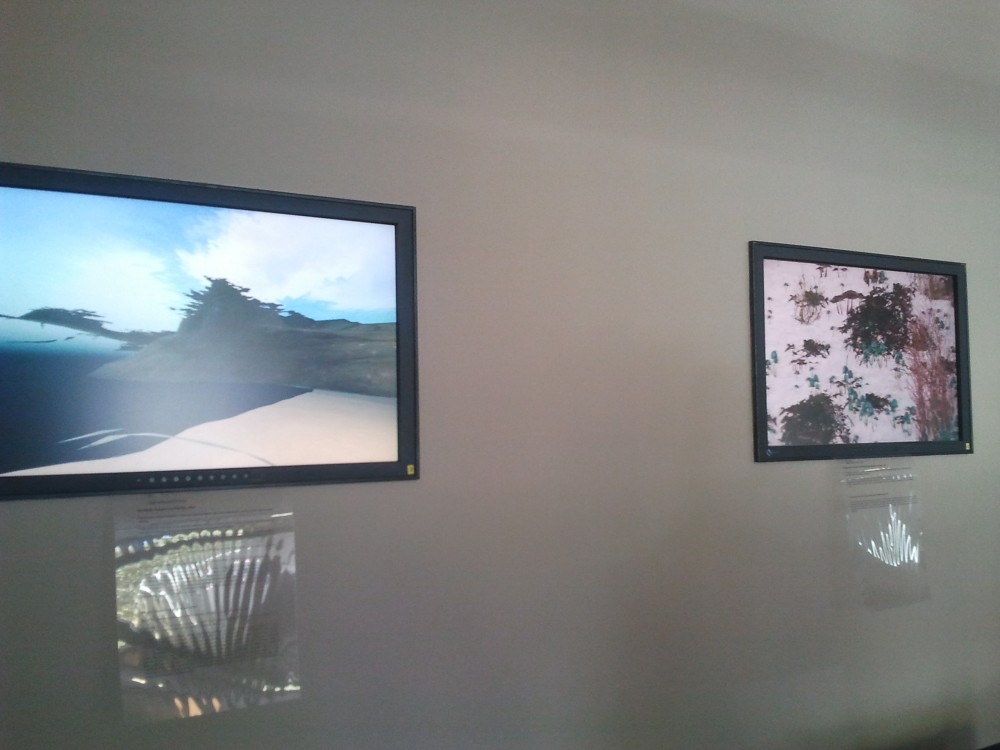
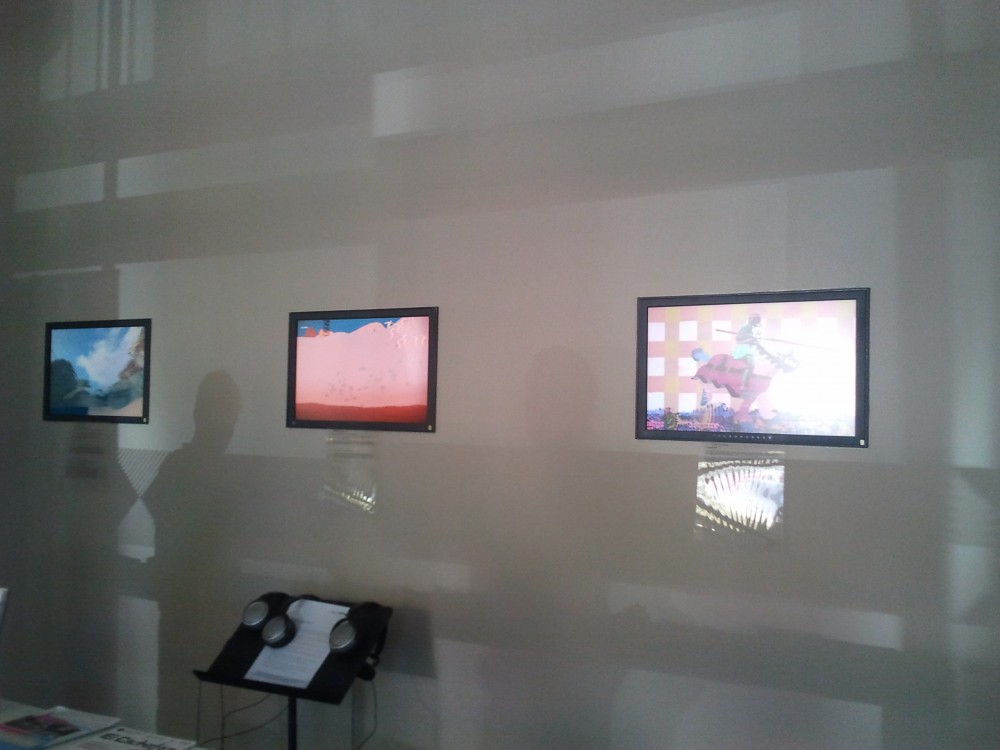
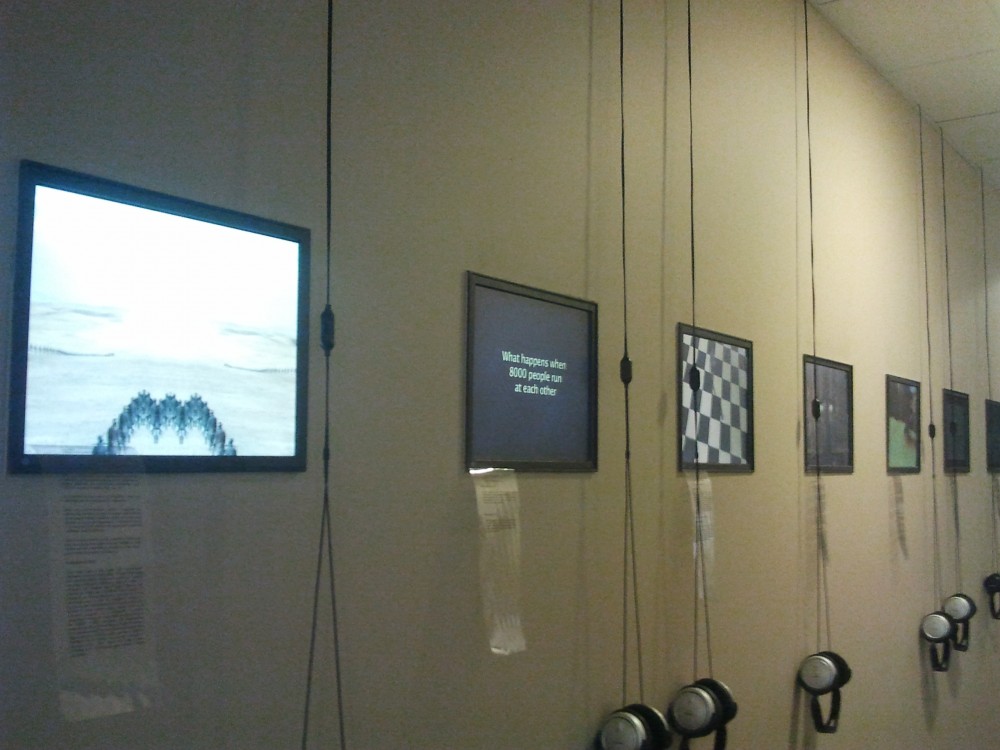
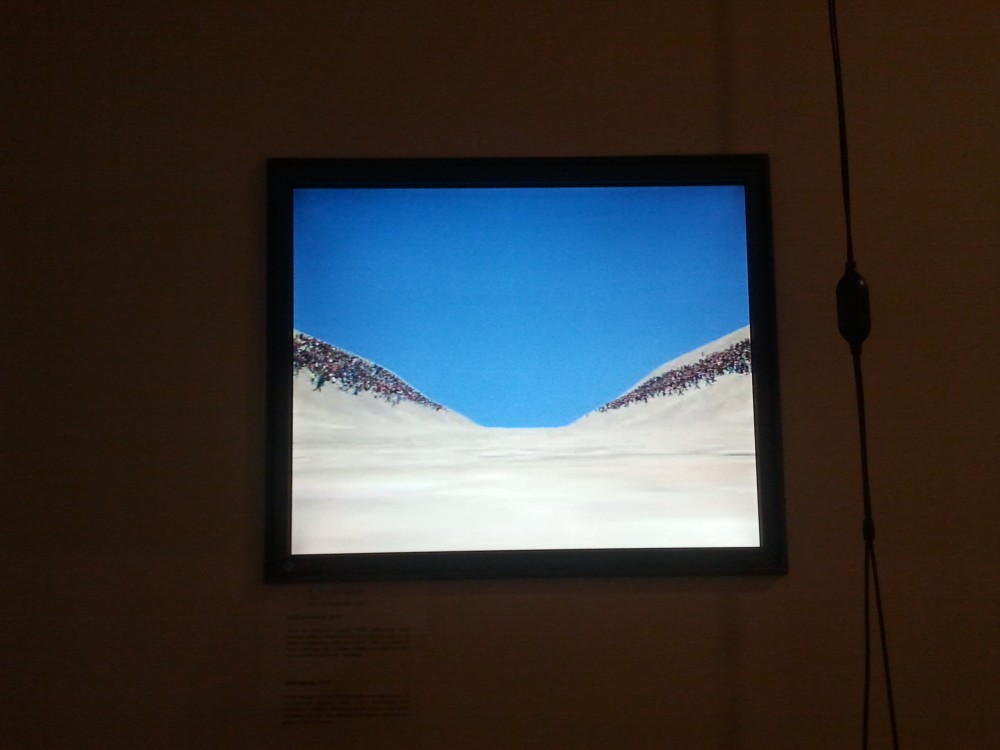
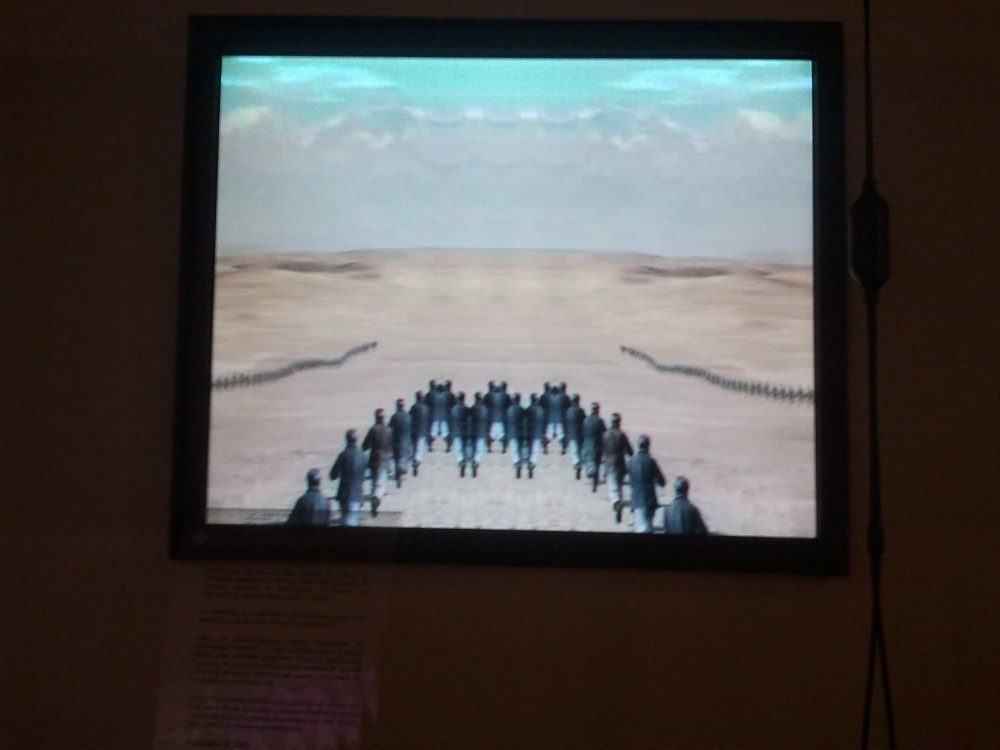
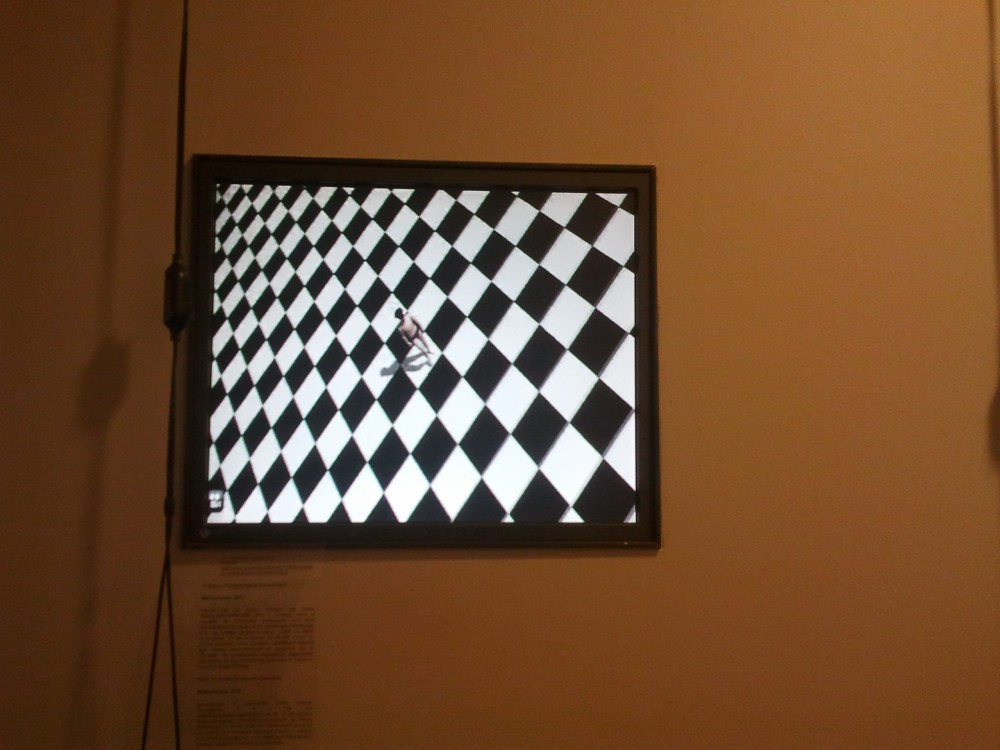
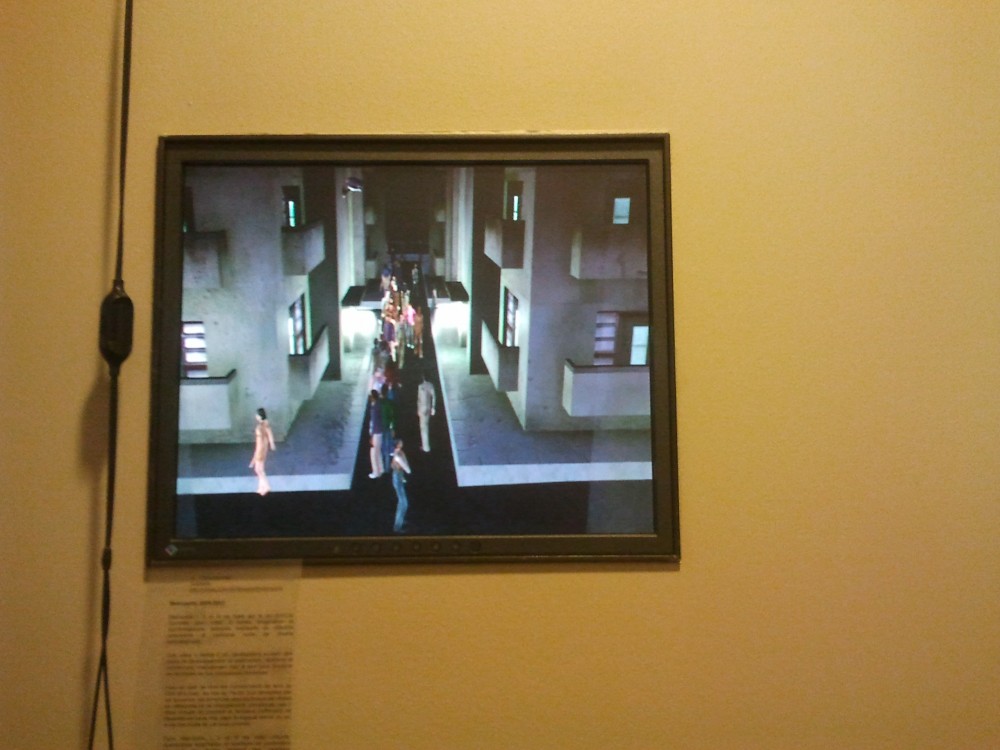
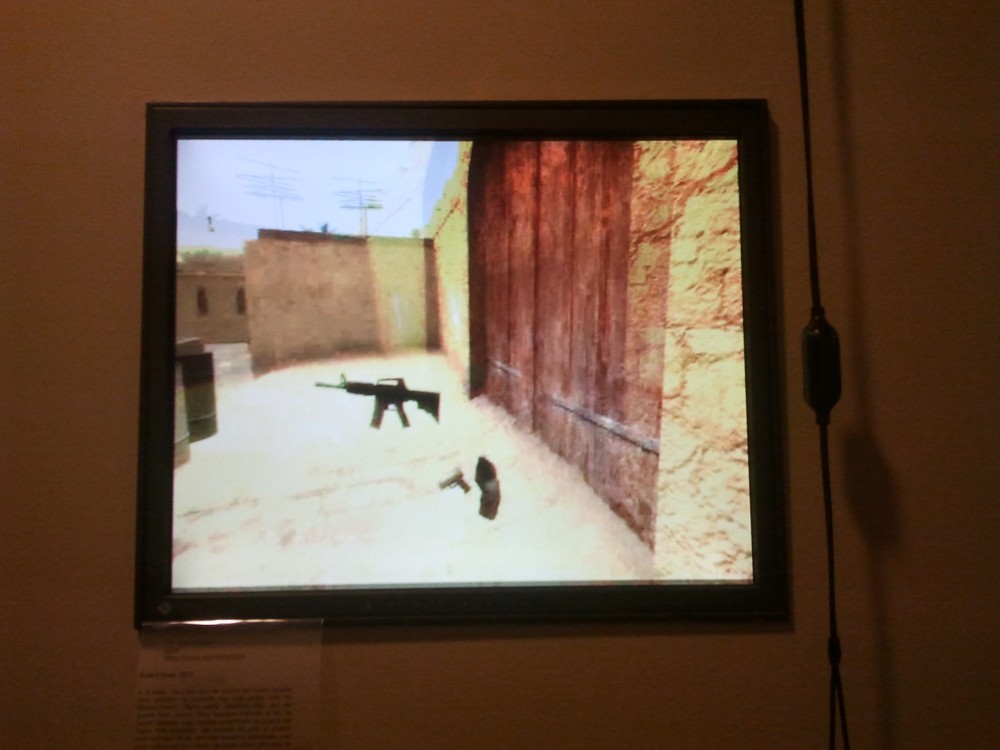
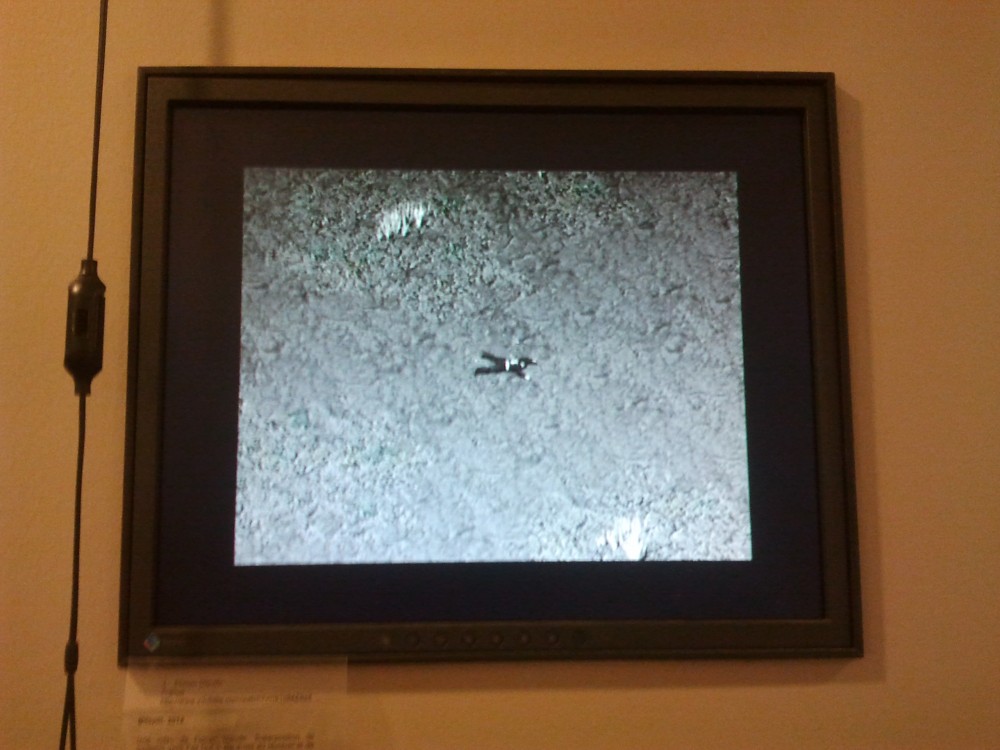
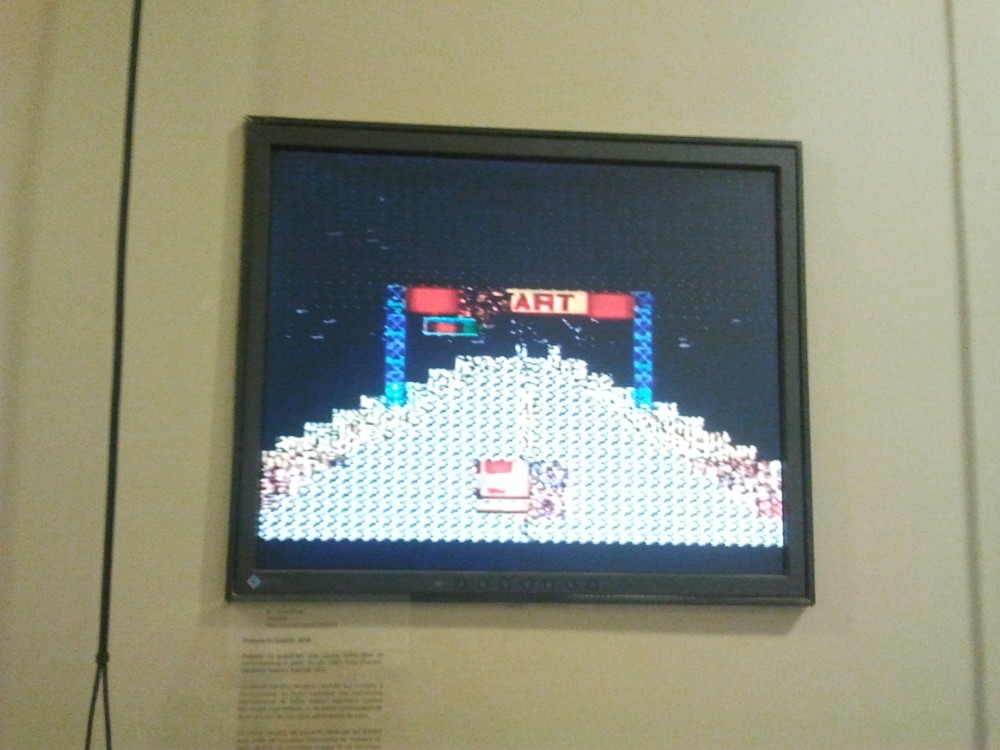
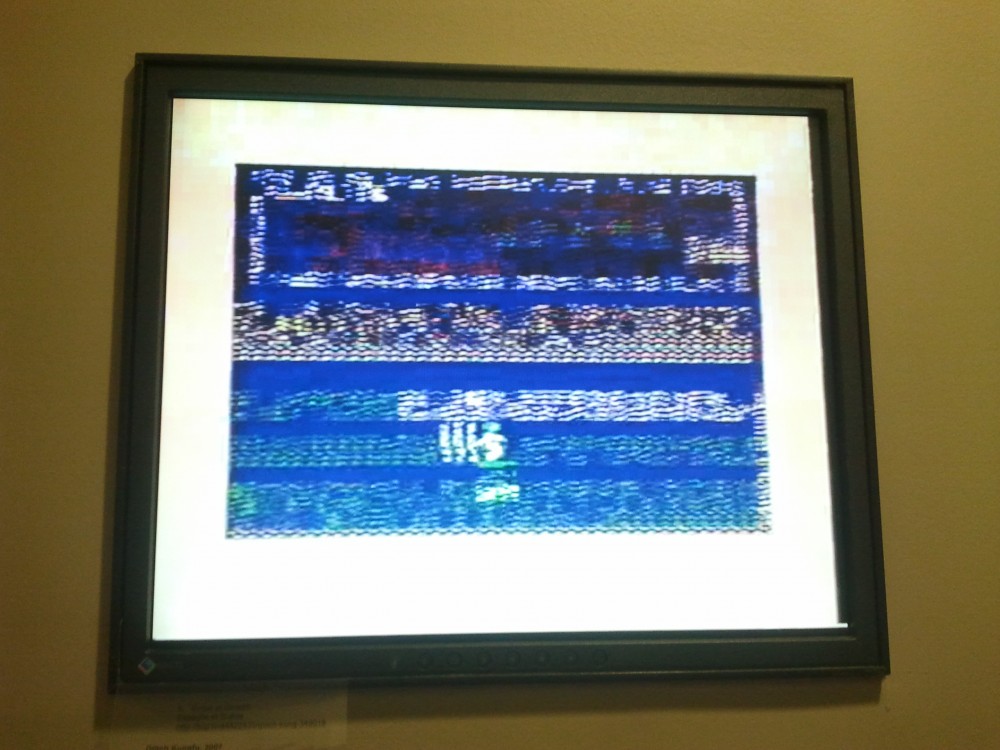
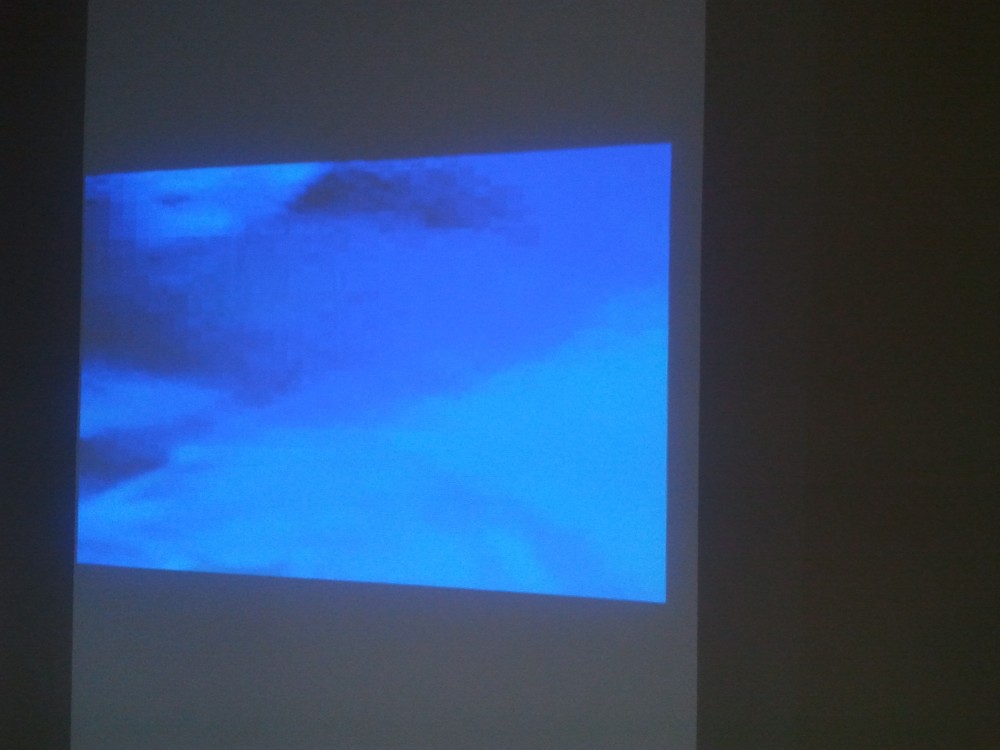
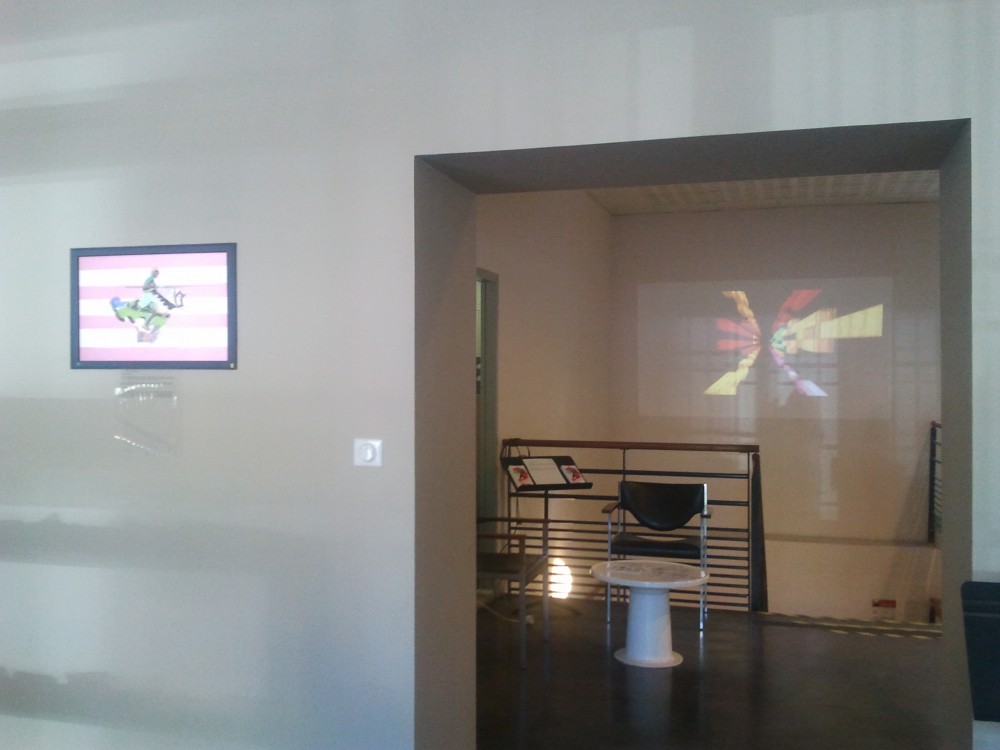
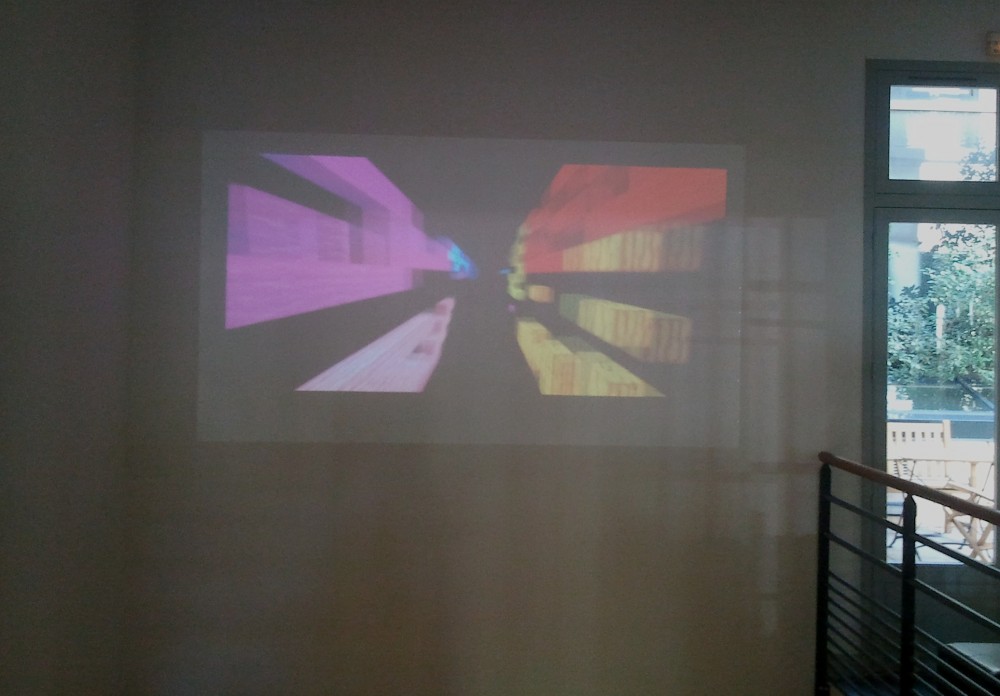
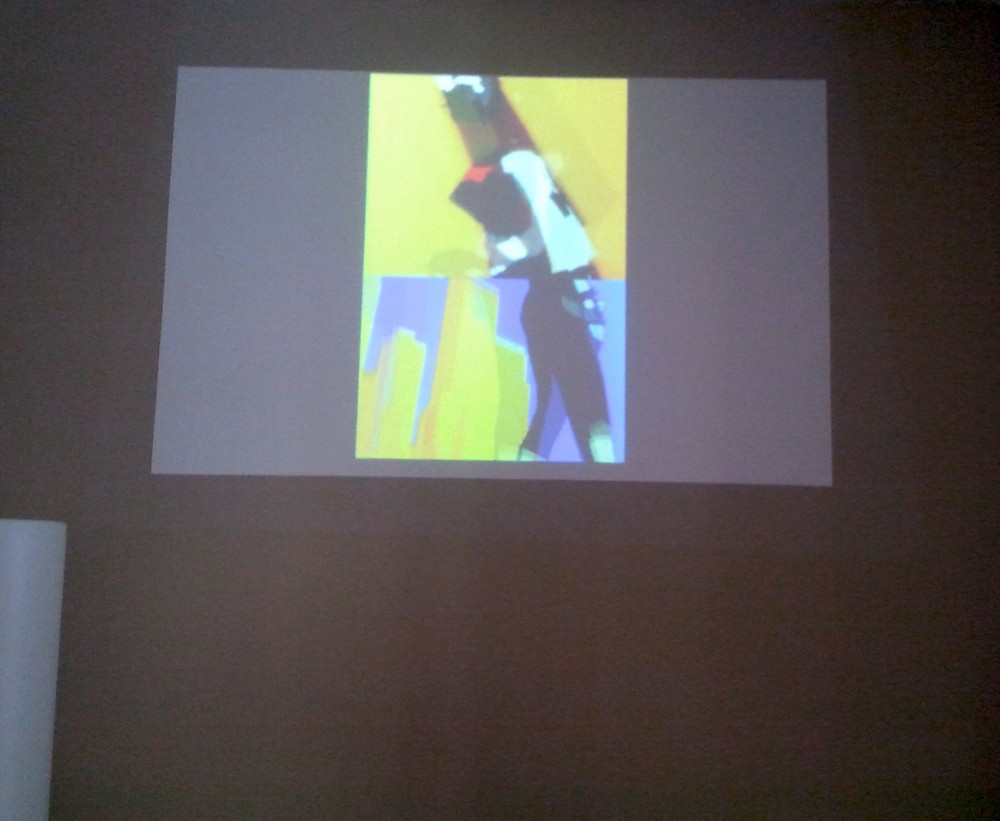
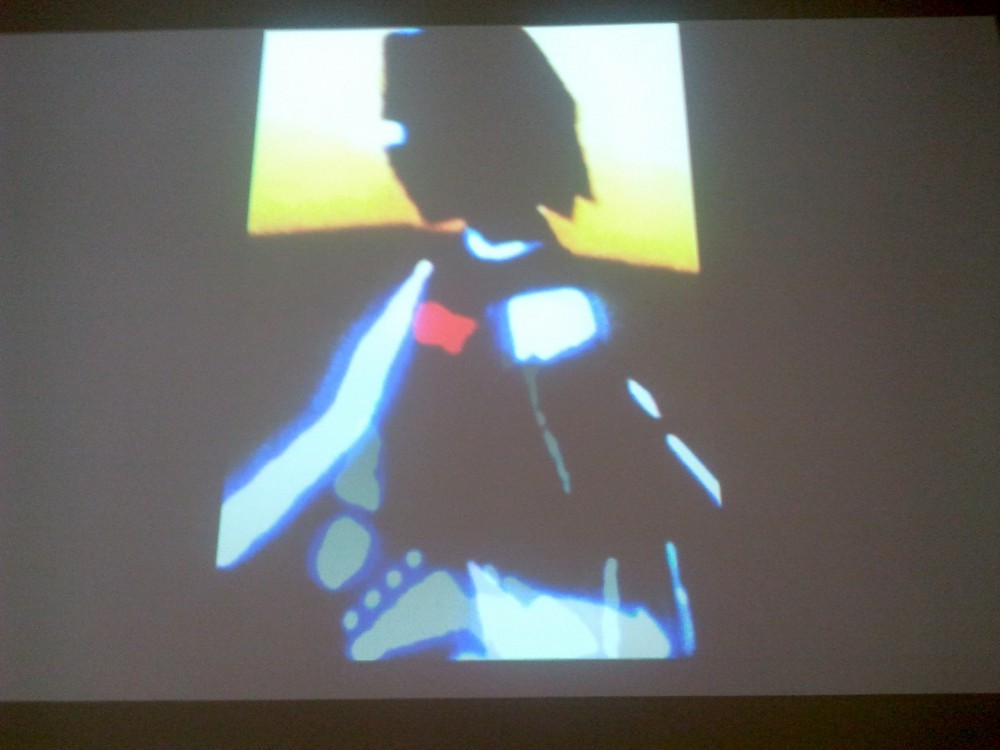
0 Comments
3 Pingbacks